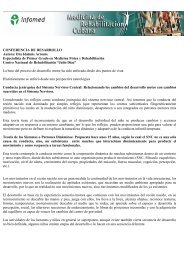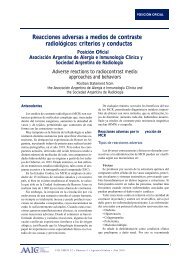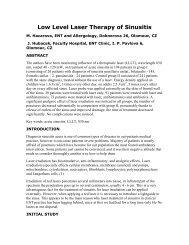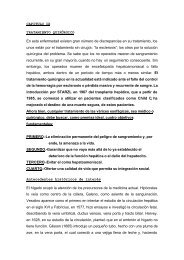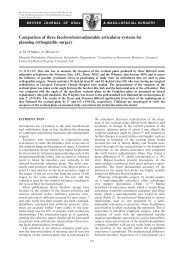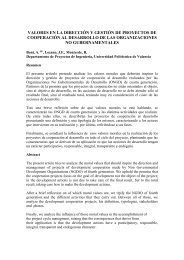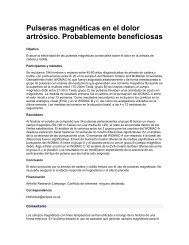Perioperative Anaphylaxis
Perioperative Anaphylaxis
Perioperative Anaphylaxis
You also want an ePaper? Increase the reach of your titles
YUMPU automatically turns print PDFs into web optimized ePapers that Google loves.
436<br />
Mertes et al<br />
for at least 6 months following an initial exposure. 58 Aprotinin used to reduce blood<br />
loss has recently been withdrawn from the market.<br />
OTHER AGENTS<br />
Several cases of allergic reactions to antiseptics have been reported in the literature.<br />
They mainly concern allergic reactions to chlorhexidine after insertion of central catheters<br />
impregnated with this antiseptic, or after intrauretheral use or topical application. 59 Rare<br />
cases of anaphylaxis following topical use of povidone-iodine have been reported. 16<br />
Protamine, whose use to reverse heparin anticoagulation has increased over the<br />
last 2 decades, has also been incriminated. Reactions may involve a number of mechanisms<br />
including IgE, IgG, and complement. In a recent systematic literature review<br />
analyzing 9 retrospective studies and 16 prospective studies, the incidence of anaphylactic<br />
reactions was estimated to be 0.19% (retrospective studies) and 0.69%<br />
(prospective studies), respectively. 60<br />
A large number of clinical cases involving many other substances have been published<br />
in the literature. These reports underline the importance of a careful and systematic<br />
investigation of all substances used during the procedure in the event of<br />
perioperative anaphylaxis.<br />
CLINICAL FEATURES<br />
<strong>Anaphylaxis</strong> is generally an unanticipated reaction. The signs of anaphylaxis occurring<br />
during anesthesia differ to some extent from the signs and symptoms that occur<br />
during anaphylaxis not associated with anesthesia. All early symptoms usually<br />
observed in the awaken patient, such as malaise, pruritus, dizziness, and dyspnea,<br />
are absent in the anesthetized patient. In addition, cutaneous signs may be difficult<br />
to notice in a completely draped patient, and many signs, such as an increase in heart<br />
rate, a decrease in blood pressure, or an increase in airway resistance, may be initially<br />
misinterpreted as a result of an interaction between the clinical status of the patient<br />
and the drugs administered during the procedure, dose-related site effects of the<br />
drugs, or excessively light anesthesia. Reactions may be well established before<br />
they are noticed; therefore, vigilance is essential and is the first step toward the diagnosis,<br />
successful management, and further investigation of anesthetic anaphylaxis.<br />
The difference between IgE and non–IgE-mediated anaphylactic reactions cannot<br />
be made on clinical grounds alone because clinical symptoms and signs can be<br />
very similar. Every hypersensitivity reaction occurring during the perioperative period<br />
should be investigated to identify the mechanism of the reaction as well as the responsible<br />
substance. 6,61,62 Other differential diagnoses are shown in Table 2.<br />
Clinical manifestations show striking variations of intensity in different patients,<br />
ranging from mild hypersensitivity reactions to severe anaphylactic shock and<br />
death. 6,13 When a classification based on symptom severity is applied, IgE-mediated<br />
reactions are usually more severe than non–IgE-mediated reactions. 15,16 In addition,<br />
for an as yet unexplained reason, IgE-mediated reactions to NMBAs have been shown<br />
to be more severe than reactions to other substances like latex in some series. 14–16<br />
<strong>Anaphylaxis</strong> may occur at any time during anesthesia and may progress slowly or<br />
rapidly. Ninety percent of reactions appear at anesthesia induction within minutes<br />
after the intravenous injection of the offending agent, such as in cases of allergy to<br />
an NMBA or antibiotic. 6,61 If the signs appear later during the maintenance of anesthesia,<br />
they suggest an allergy to latex, volume expanders, or dyes. Latex allergy<br />
should also be considered when gynecologic procedures are performed. Particles<br />
from obstetricians’ gloves, which accumulate in the uterus during obstetric



